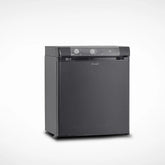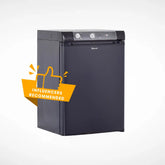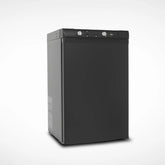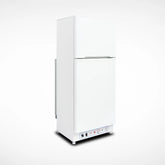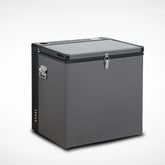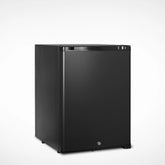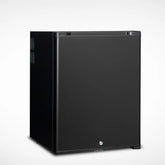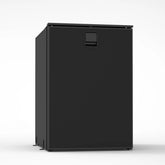Keep Your Cool: Essential Tips for Maximizing Your Camper Fridge's Efficiency
For every outdoor enthusiast, RV owner, or road trip adventurer across the United States, a reliable camper fridge or gas refrigerator isn't just a luxury – it's a necessity. It keeps your food fresh, your drinks chilled, and those precious ice creams from melting into a sticky puddle, whether you're battling the summer heat of the Arizona desert or the humidity of the Florida Keys. But owning one is only half the battle; the real game-changer is knowing how to make it run as efficiently as possible.
Why does efficiency matter so much? For starters, a highly efficient camper fridge means less fuel consumption (whether it's propane, 12V battery power, or 120V shore power), longer cooling times, and ultimately, a more enjoyable, worry-free adventure. In a country with diverse climates and vast distances, squeezing every ounce of cooling power from your portable appliance is paramount.
This comprehensive guide will equip you with the essential tips and tricks to maximize your camper fridge's efficiency, ensuring your provisions stay perfectly chilled from the red rocks of Utah's national parks to the lush forests of the Pacific Northwest.

1. Pre-Chill, Don't Just Fill: The Golden Rule of Fridge Prep
This is arguably the most crucial step often overlooked. Throwing warm food and drinks into a room-temperature fridge forces the compressor or absorption system to work overtime, consuming significant power to bring everything down to temperature.
The Strategy:
· At Home: Several hours before your trip, or even the night before, plug in your camper fridge at home (if it's an electric model) or start it on propane/12V power. Let it reach its desired internal temperature.
· Pre-Cool Your Contents: Wherever possible, pre-chill all your food and beverages in your home refrigerator or freezer before transferring them to the camper fridge. Frozen water bottles or ice packs can also serve as excellent pre-cooling agents, helping to bring down the internal temperature of the fridge and its contents simultaneously.
· The Cooler Trick: For a quick boost, place a few frozen gel packs or even frozen vegetables inside the empty fridge an hour or two before loading.
Why it Works: By starting with a cold fridge and cold contents, your appliance only needs to maintain the temperature, not drastically reduce it, leading to significantly lower energy consumption.
2. Strategic Packing: The Art of Fridge Tetris
How you pack your fridge has a direct impact on its efficiency and your ability to find what you need without letting all the cold air out.
The Strategy:
· Fill It Up (Sensibly): A full fridge operates more efficiently than an empty one. The mass of cold items helps to retain the cold temperature. However, avoid over-packing to the point where air circulation is hindered.
· Organize and Label: Use small containers, clear bags, or even dedicated fridge organizers to group similar items. This prevents you from rummaging through everything, holding the lid open for extended periods. Consider labeling shelves or sections.
· Heavy at the Bottom, Frequent at the Top: Place heavier, less frequently accessed items (like large meat packs or bulk drinks) at the bottom. Lighter, frequently used items (like snacks, butter, or sandwich ingredients) should be easily accessible at the top or front.
· Minimize Air Pockets: Try to minimize empty air space. If you have gaps, fill them with ice packs or frozen water bottles. They act as thermal mass, helping the fridge maintain temperature even when unplugged or opened.
Why it Works: Efficient packing reduces the time the lid is open, minimizes cold air escape, and leverages thermal mass to stabilize internal temperatures.
3. Location, Location, Location: Where You Place Your Fridge Matters
The external environment plays a massive role in your fridge's performance.
The Strategy:
· Shade is Your Friend: Always place your camper fridge in the coolest, shadiest spot available. Direct sunlight, especially in the sweltering summer heat, will force your fridge to work incredibly hard to fight the heat gain. A shaded awning, under a tree, or inside a well-ventilated RV compartment are ideal.
· Ventilation is Key: Ensure there's ample airflow around the fridge, especially around the compressor vents (for compressor models) or the absorption unit's rear (for gas/absorption models). Blocked vents lead to heat buildup, reducing efficiency and potentially shortening the lifespan of the unit. Avoid placing it flush against walls or other gear.
· Level Ground (Especially for Absorption Fridges): While less critical for compressor fridges, absorption (gas) refrigerators must be on a level surface to operate efficiently. The internal cooling cycle relies on gravity for the refrigerant to flow correctly. An unlevel fridge will cool poorly or not at all.
· Insulate Your Surroundings: If your fridge is in a hot vehicle interior, consider adding insulation to the surrounding area. Reflective window covers or thermal blankets can reduce the overall heat load on the fridge.
Why it Works: Minimizing external heat transfer reduces the workload on the cooling system, leading to lower energy consumption.
4. Smart Usage Habits: Open Less, Close Faster
This seems obvious, but it's where most efficiency gains (or losses) happen.
The Strategy:
· Plan Your Opens: Before opening the fridge, take a mental note of everything you need. Grab it all at once rather than opening, closing, and reopening multiple times.
· The "Cold Box" Strategy: For very frequently accessed drinks or snacks, consider keeping a separate, smaller, well-insulated cooler with ice. This allows you to grab a soda without disturbing the main fridge's temperature.
· Quick Checks: If you just need a quick peek, do so swiftly. Don't stand contemplating your snack options with the lid wide open.
· Seal Check Regularly: Inspect the rubber seals around the lid periodically. Ensure they are clean, free of debris, and forming a tight seal. A compromised seal allows cold air to escape and warm air to enter. You can test this by closing the lid on a piece of paper; if you can easily pull the paper out, the seal might need cleaning or replacement.
Why it Works: Every time you open the fridge, warm ambient air rushes in, forcing the unit to expend energy to cool it down again. Minimizing this cold loss is paramount.
5. Power Source Management: Optimize Your Energy Input
Different power sources have different efficiency implications.
The Strategy:
· AC Power When Available: When camping at RV parks or sites with electrical hookups, always run your fridge on AC (120V). This is generally the most efficient and reliable power source and saves your 12V battery.
· Solar Power Integration: For boondocking or off-grid adventures, invest in a quality solar panel setup. Running your fridge directly from solar or keeping your auxiliary battery topped up via solar greatly extends your fridge's run time without needing to run your vehicle engine.
· Monitor Battery Voltage: If running on 12V DC, especially from your vehicle's auxiliary battery, monitor the voltage. Most portable fridges have low-voltage cut-offs to protect your battery, but efficient use extends how long you can run before needing a charge. Consider a dedicated deep-cycle RV battery for prolonged use.
· Propane Operation (for Absorption Models): When using a propane fridge, ensure a consistent gas supply and that the burner is clean for optimal flame. Propane can be very efficient for long-term stationary cooling and is a staple for many RVers.
Why it Works: Utilizing the most stable and appropriate power source at any given time reduces strain on your system and ensures consistent operation.
6. Maintenance Matters: Keeping Your Fridge in Top Shape
A well-maintained fridge is an efficient fridge.
The Strategy:
· Clean Coils/Vents: For compressor fridges, regularly clean any dust or debris from the condenser coils and ventilation grilles. Dirt acts as an insulator, making the compressor work harder. Use a soft brush or vacuum.
· Check Propane Burner (Absorption Models): For propane fridges, periodically inspect the burner assembly for cobwebs, dust, or soot. A clean burner ensures efficient combustion. Consult your fridge's manual for safe cleaning procedures.
· Defrost Regularly: While modern camper fridges are efficient, frost can still build up over time. A thick layer of frost acts as an insulator, reducing cooling efficiency. Defrost your fridge whenever the frost layer becomes noticeable (usually around 1/4 to 1/2 inch).
· Store Properly: When not in use for extended periods, clean the fridge thoroughly, dry it completely to prevent mold, and leave the lid slightly ajar to allow for air circulation.
Why it Works: Regular maintenance prevents components from working harder than they need to, preserving efficiency and extending the appliance's lifespan.

Chill Out, Go Further
Maximizing your camper fridge's efficiency isn't just about saving power or propane; it's about enhancing your entire outdoor experience. By implementing these essential tips – from pre-chilling and strategic packing to smart placement and diligent maintenance – you'll ensure your portable companion delivers peak performance, keeping your provisions perfectly cool regardless of where your adventures take you across the diverse landscapes of the USA.
So, whether you're embarking on a weekend getaway to a state park or venturing into the remote backcountry, apply these strategies and truly Keep Your Cool. Happy adventuring!
Ready to upgrade your outdoor kitchen?
Explore our wide selection of high-performance camper fridges and gas refrigerators designed for every adventure. Browse our shop now to find the perfect cooling solution, or contact our sales team for personalized advice and expert guidance. We're here to help you stay cool on the road!
